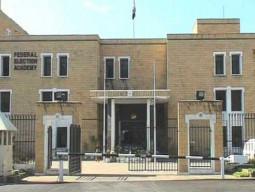
The election results did not go down well with the Pakistani establishment or the mainstream political parties in West Pakistan, primarily the PPP, which could only win 85 of a total of 148 seats. The rest of the seats were won by the PML-Qayyum (10), PML-Council (seven), Jamaat-e-Islami (four) and smaller parties and independents (40).
There are lessons in the 1970 general elections that we have yet to learn. Pakistan’s most populated province, Punjab, currently has 148 seats in the National Assembly and a share of 35 in the 60 seats reserved for women. This makes up for 183 seats. Add half the minority seats in case a party sweeps Punjab, the political strength goes up to 188. A party winning Punjab gets to form the government, irrespective of its presence in other provinces. This does not augur well for the federation nor for democracy.
The results of the general elections held in 2013 must have rung alarm bells for the custodians of the integrity of the federation. Despite being at the head of the most populist government since 1998, the PML-N bagged only 17.17 per cent of the registered votes nationally — 26.72 per cent in Punjab, 7.57 per cent in Khyber-Pakhtunkhwa, 2.34 per cent in Sindh, 2.24 per cent in Balochistan, 23.38 per cent in Islamabad and 2.16 per cent in Fata. The PML-N showing does not improve even if the percentage of polled votes for the National Assembly seats is taken into account. It received 4.54 per cent of the polled votes in Sindh, 5.74 per cent in Balochistan, 7.38 per cent in Fata and a slightly higher 16.95 per cent in Khyber-Pakhtunkhwa. In Punjab, the party grabbed almost half of the polled votes, i.e., 45.77 per cent and in Islamabad Capital Territory, 37.38 per cent.

This is a moot point. A federation can be best run by political parties which have national presence and represent the country’s ethnic diversity. If not sizeable, it should be significant. However, the current constitutional provision, i.e., Article 51 (5), requires that seats in the National Assembly shall be allocated to each province, Fata and Islamabad Capital Territory “on the basis of population in accordance with the last preceding census officially published.” Arguing in favour of weighted criteria such as area, state of development, revenue base, and so on, for the allocation of National Assembly seats to provinces, however, may not be democratic as equal representation is the guiding principle in a democracy. But there is always room for innovation in consideration of specific geographical and cultural contexts where democracy is being practised, without compromising its spirit. Various approaches can be employed to address the issue of political monopoly of one province over the rest of Pakistan.
One approach may just be the creation of smaller provinces, which will not only improve governance and public wellbeing, but will also create power equilibrium among the federating units. However, the proposition does not have many bidders in the country and therefore may create fissures in the polity instead of healing them.
This brings us to the need of electoral and political reforms. The First Past the Post System currently being practised in Pakistan is decadent in many ways, but primarily due to its inability to translate a maximum number of votes into representation or seats. More than 51 per cent of the votes polled in the general elections of 2013 were wasted as they never translated into seats. A better option would be the proportional representation system, which allocates seats to political parties on the basis of votes polled, thereby ensuring improved representation of geographic and ethnic diversity in the country. If 148 National Assembly seats from Punjab are allocated to political parties on the basis of votes polled to them in the 2013 elections, the PML-N will get 84, PTI 32, PPP 18, PML nine, Jamaat-e-Islami two, JUI-F one, APML one and PML-Z one. This system clearly helps to dilute the monopoly of one party over the political power in a province with the decisive number of seats, ensuring that any government formed as a result also has coalition partners from other provinces.
While much has been written and said about the improvements in the electoral system, there has been little effort at political reforms in the country. Pakistan does not have well-defined rules for the recognition and registration of political parties. In fact, political parties do not even require registration, but only enlistment with the Election Commission of Pakistan (ECP). As many as 309 political parties are currently enlisted with the ECP.
Making a case for stricter state regulations for political parties in a country where political organisation is already weak may not augur well for its growth, development and consolidation. However, there is a need for developing incentives for political parties to invest in their organisation evenly in all provinces in the larger interests of the federation.
There are no simple answers, but there are several models that can be considered. The one being implemented in neighboring India needs to be looked into, where the recognition and registration of a political party as a national party depends on its ability to get a certain number of seats or a certain percentage of polled votes in at least four states in the last general election. The status is not permanent and a national political party is required to continue to fulfill the criteria in successive elections. The status entitles political parties to certain privileges, such as access to electoral lists, free airtime on government-run media outlets and a party symbol.
Applying this to Pakistan would mean that a political party would have to get a certain number of seats or certain percentage of votes in at least, say, three provinces in the last election, to be able to qualify as a national party and get a symbol for national election. Otherwise, it will be a regional party and can contest provincial elections, vying for provincial governments. The model can be further refined to suit the Pakistani context.
Nevertheless, there is need for the Parliamentary Committee on Electoral Reforms to consider incisive measures to transform the electoral system in a way that it can yield governments which represent geographical, ethnic and religious diversities in the country. This is crucial for the strengthening of the federation as well as consolidating democracy.
Published in The Express Tribune, February 23rd, 2016.
Like Opinion & Editorial on Facebook, follow @ETOpEd on Twitter to receive all updates on all our daily pieces.







































COMMENTS (2)
Comments are moderated and generally will be posted if they are on-topic and not abusive.
For more information, please see our Comments FAQ